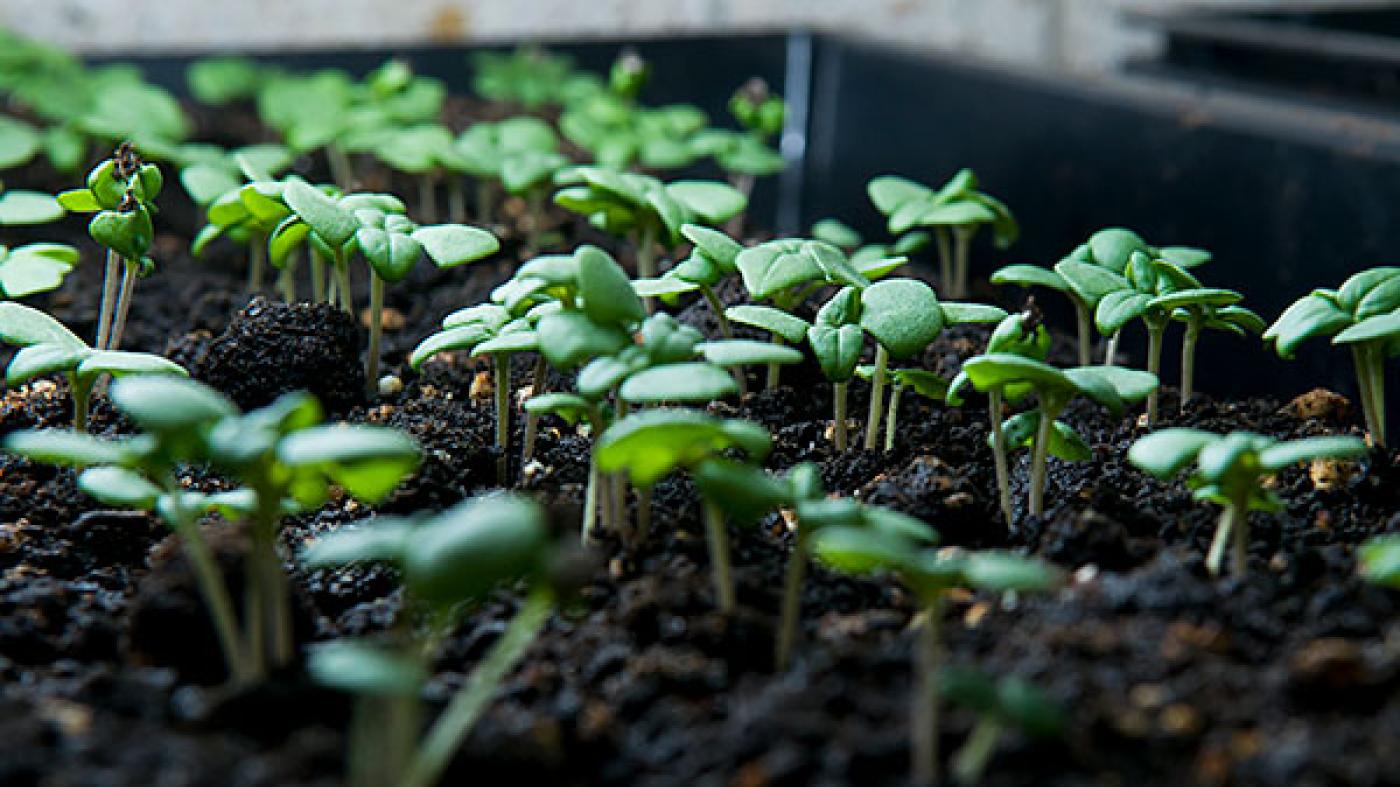
Fruit, Vegetable, and Herbs
Fruit, Vegetable, and Herbs

Fruit, Vegetable, and Herb Care
Plant small transplants of asparagus, early potatoes, lettuce, radish, mustard, onions, peas, rhubarb, spinach, turnips, cauliflower, carrots, and all other cool-season crops as weather permits. Plant midseason potatoes in mid-April.
Plant strawberries and pinch off first-year flowers to develop strong root systems.

Fruit, Vegetable, and Herb Care
Prune grapevines according to selected method. For detailed information on pruning grapevines, contact plant information at (847) 835-0972 to order Plant Information Fact Sheet #36, Pruning Grapevines.
Prune raspberry bushes and reattach canes to support system, if necessary. Some gardeners mow their raspberry patches to the ground this month to encourage one big crop during summer. Everbearing bushes should not be mowed down.

Fruit, Vegetable, and Herb Care
Harvest pumpkins before a killing frost.
Continue to harvest vegetables. If hard frost threatens, pick all tomatoes, including the unripe ones, and store in cardboard boxes or paper bags in basement.
Cut back any remaining herbs and bring them indoors to use fresh or dry.
Cover tender plants from light freezes at night by covering them with sheets, plastic, or upturned bushel baskets.

Fruit, Vegetable, and Herb Care
The next six weeks will provide an abundance of produce. Continue to harvest vegetables as they ripen. Warm-season crops like peppers and tomatoes must be picked as soon as possible. If an early frost threatens, cover these plants with baskets or light blankets. Refrigerating tomatoes causes them to lose their flavor. Store in a cool, 60- to 70-degree room for a few days.

Fruit, Vegetable, and Herb Care
During the first week of August, plant short-season snap beans, broccoli, cabbages, cauliflower, carrots, mustard greens, spinach, and radishes for fall harvesting.
Cool-season lettuces, mesclun mixes, and unusual greens that were planted in early spring can be planted again this month. If weather is unusually hot, plant these greens in partial shade.

Fruit, Vegetable, and Herb Care
Continue to harvest herbs to use fresh, and dry or freeze them in small batches in an ice cube tray. Pinch off developing flowers to retain essential oils and flavor in the plants’ foliage.
Monitor tomatoes during hot weather. Tomatoes appreciate an even supply of moisture rather than a heavy soaking and then a drought. Straw mulch is helpful in these beds.

Fruit, Vegetable, and Herb Care
Harvest peas, raspberries, and all cool-season lettuces and vegetables as they ripen.
If squash vine borer has been a problem in your garden, cover small transplants of squash, cucumbers, and zucchini with row covers to prevent moths from laying eggs on vines. Remove row covers when plants begin to flower. Consider planting resistant varieties next year.

Fruit, Vegetable, and Herb Care
Plant corn, snap beans, summer squash, and New Zealand spinach in mid-May.
Thin carrots, beets, and late lettuce.
Harvest green onions, lettuce, and radishes. Any of the mesclun mix or cut-and-come-again lettuces can be harvested to a few inches three separate times before the plants have exhausted themselves.
Harvest mature asparagus and rhubarb.
Spread several inches of aged compost on vegetable and herb beds, if not done yet.

